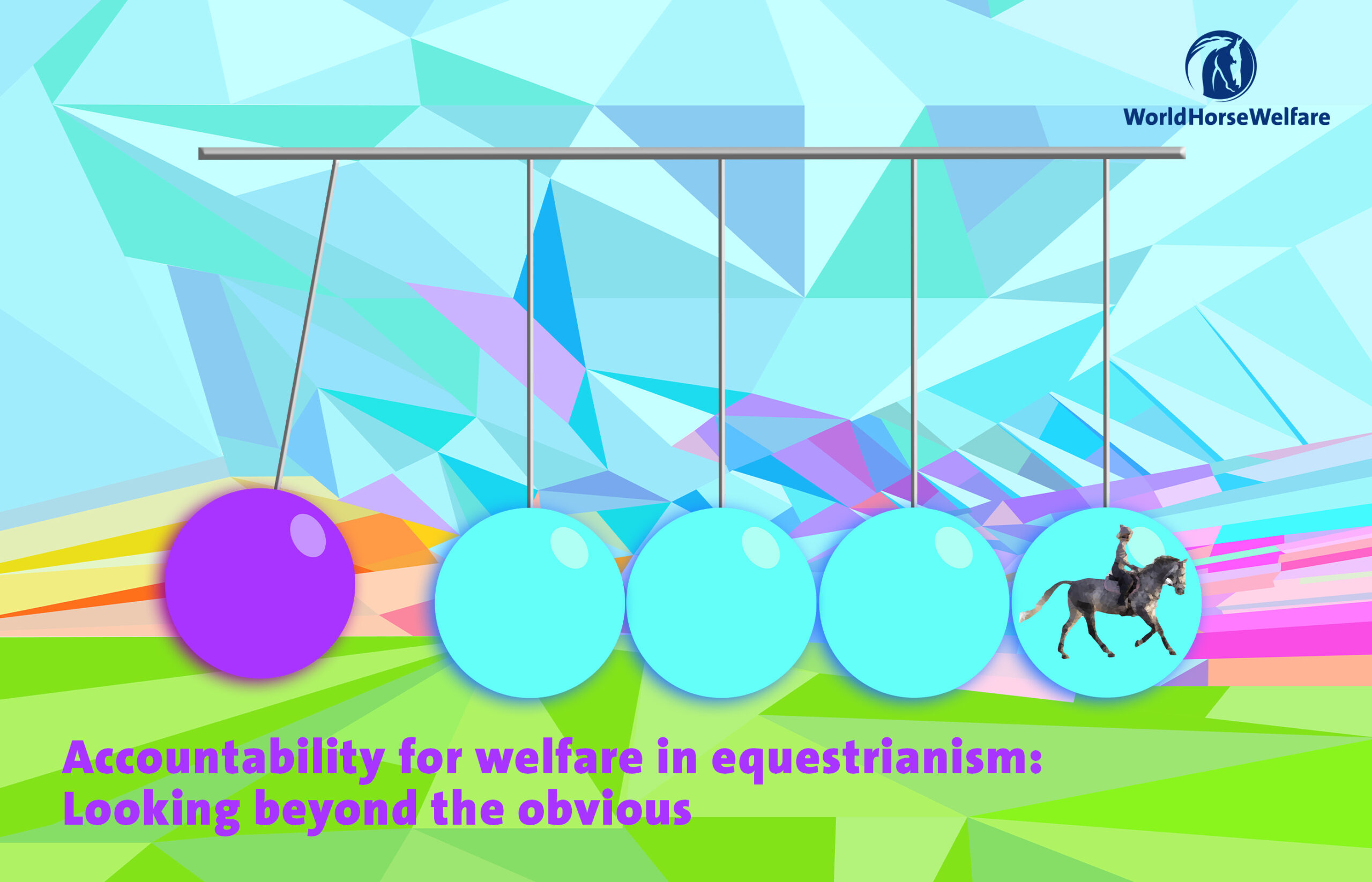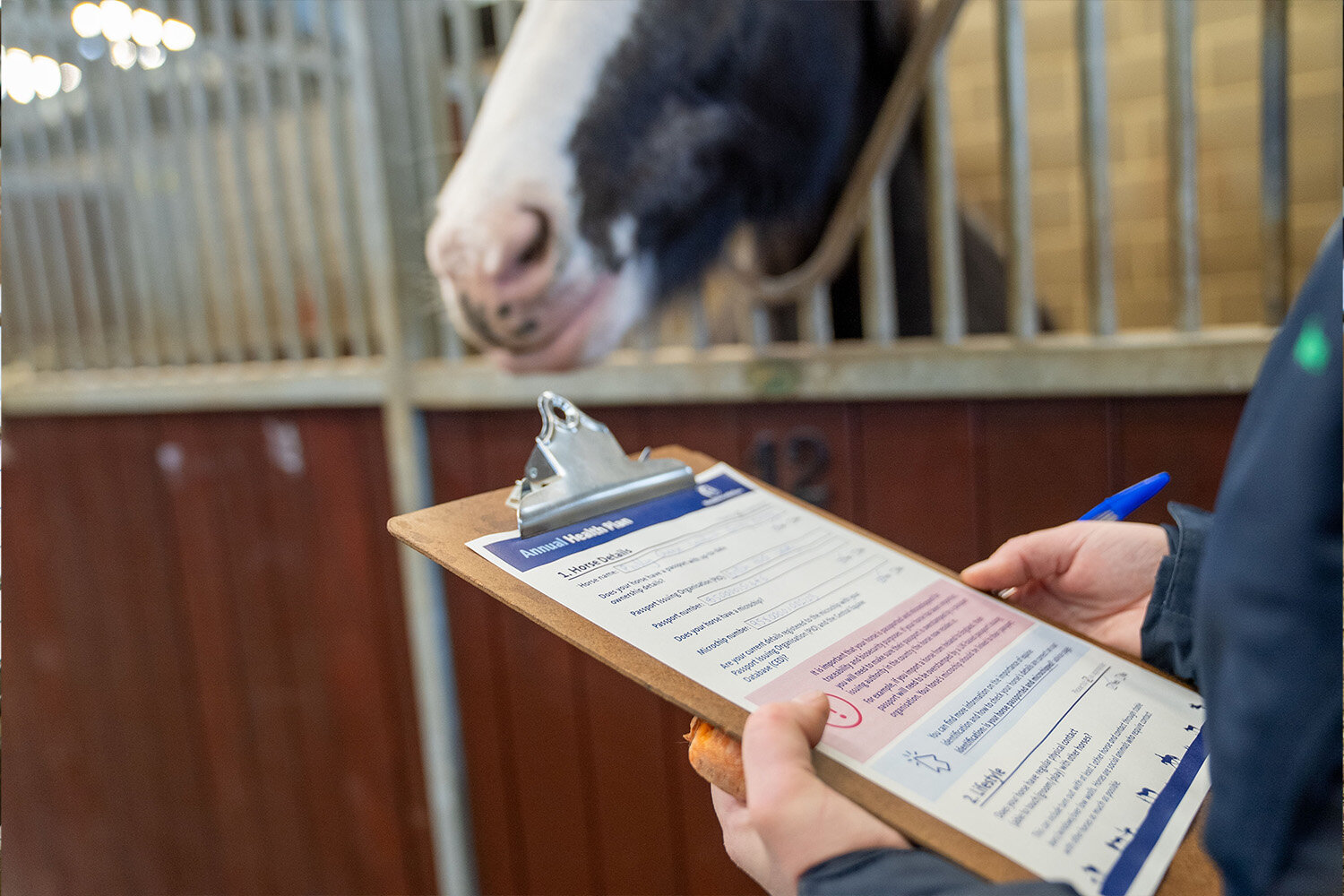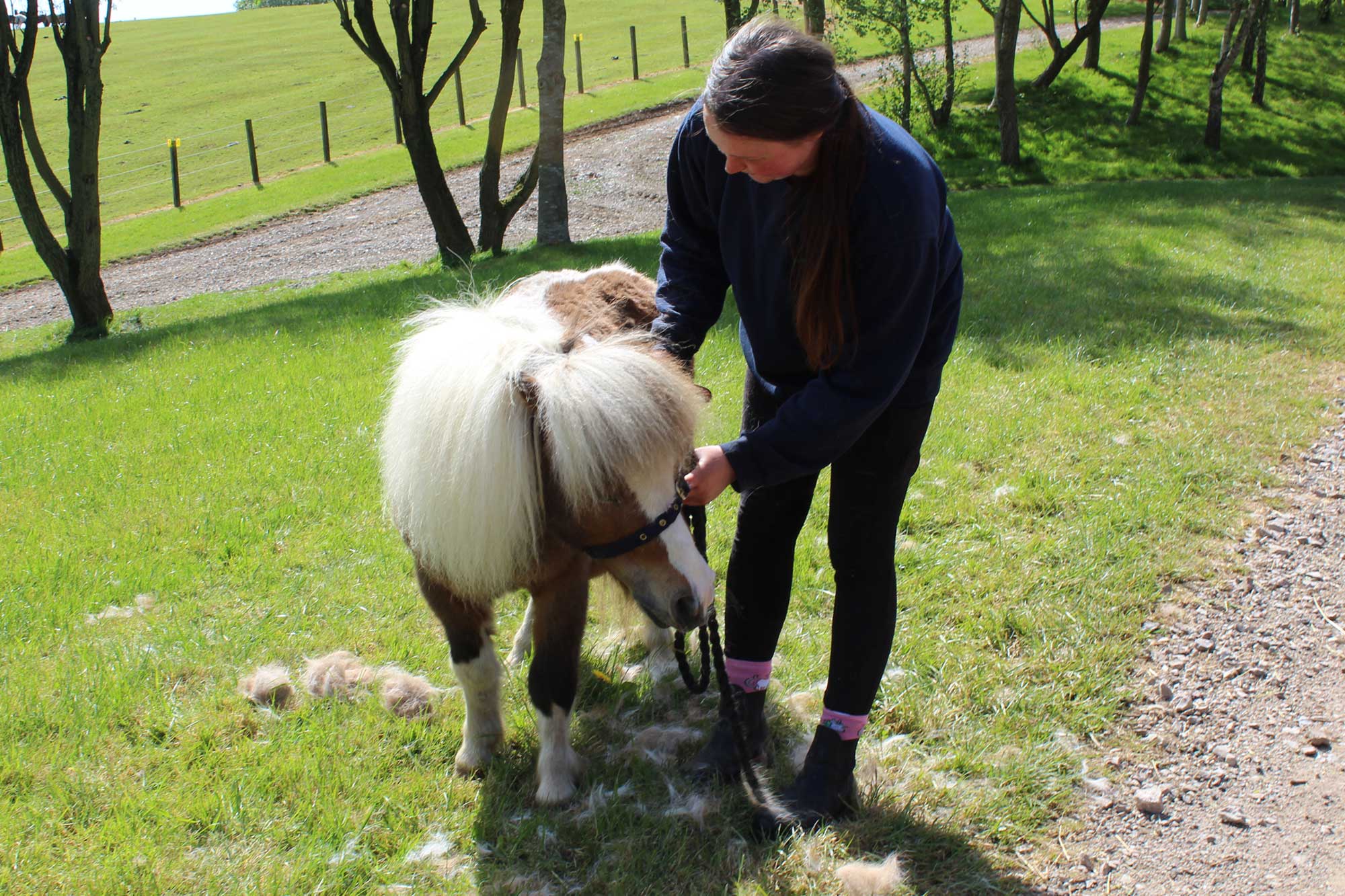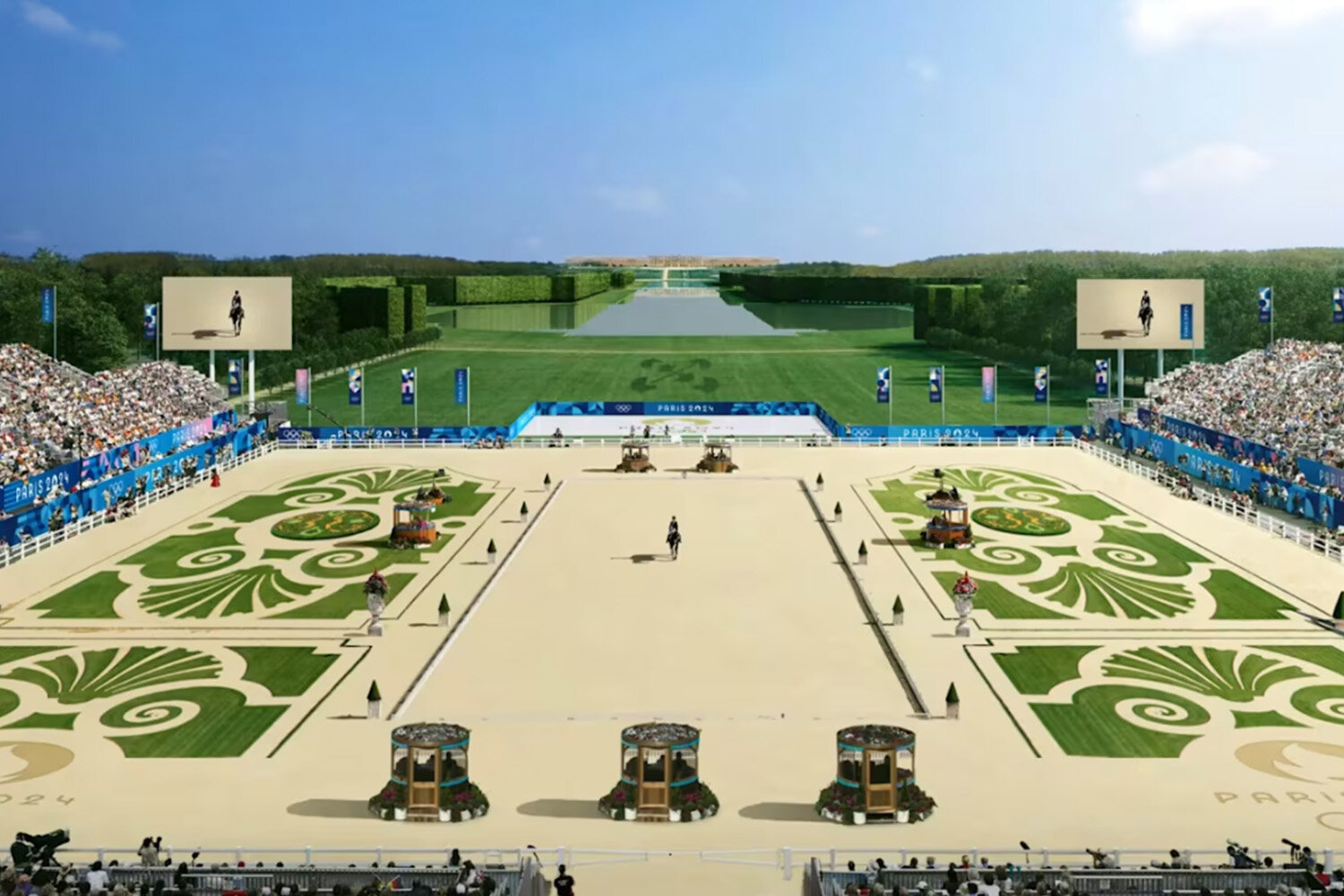Exploring hoof balance, daily foot care, and remedial farriery
Episode eight of ‘Horses Explained’ sees farrier Jay Tovey explain how a collaborative approach is key to hoof health in modern horses.
Posted on 29/08/2025

From the origins of the horse’s hoof 17 million years ago to the demands placed on modern horses’ hooves today by their workload, episode eight of ‘Horses Explained’ – now freely available on our Education Youtube channel – sees farrier Jay Tovey take an in-depth look at what makes up a horse’s hoof. He explains how important good foot care is, in terms of both professional treatment and daily management, and shares tips on how owners can make farriery appointments easier for all involved.
The importance of healthy hoof balance and how posture affects it
Hoof balance, the relation of the hoof capsule to the conformation of the horse is an important part of maintaining a healthy foot. If a horse’s limbs are very straight and perfect, then the hoof capsule will be ideal and will bear weight evenly. But if a horse’s conformation is less than ideal, this will lead to imbalances in their feet, which a farrier is able to assess and manage.
Jay explains, “It’s a real skill to be able to look at that horse, assess its conformation, and then see what it actually needs. Once you see the horse start to move, then you can assess the landing [and] loading [of each foot] and different stride patterns.”
Jay goes on to describe how farriers assess the hoof statically, looking at mediolateral (side-to-side) balance as well as anterior-posterior balance (the toe:heel ratio) and solar symmetry, which is related to the mediolateral balance. “If you can see that one side is contracted and one side is flared, then obviously there’s an issue with either conformation or balance to that individual limb,” he says.
Whilst a horse’s conformation doesn’t change through their life, their posture can change with age and any illnesses or injuries they may experience. These postural changes can be reflected in the way the horse moves and how their hooves wear. “It is important to notice these changes and trim each foot as an individual,” says Jay. “A well-balanced foot functions well and is less prone to any conditions or diseases. A poorly-balanced foot is much more prone to conditions and injuries.”
How remedial farriery and shoeing can support a horse’s wellbeing
Remedial farriery is something that horses can need at any age, sometimes right from the day they’re born. Conditions that can be supported with remedial farriery include “flexural deformities, angular limb deformities, or tendon laxity”. Jay explains that to counter these, “you can use a small extension shoe, which extends out the back of the foot”. These can be glued on with acrylic and provide enough support to ensure that the deformity is corrected as the foal matures and strengthens up.
Reflecting on whether horses need to be shod, Jay says, “They don’t generally need shoes. Lots and lots of horses are unshod – I would say about 50% of my clientele have horses that are unshod. It just depends on the amount of work they’re doing and what discipline they’re doing.
“Now horses are domesticated, their feet will grow long if they’re not working very hard. [However,] if wear is exceeding the amount of growth, then there becomes a problem and that’s when we might have to start shoeing horses. A lot of competition horses wear shoes, especially for traction, [but] many compete barefoot now. I do some Thoroughbreds that even event barefoot, which is fantastic.”
The importance of daily hoof care
Carrying out daily hoof care – checking feet and keeping them clean – is vital and ensures that any acute problems or injuries are spotted. Daily hoof management also helps with farrier visits, as Jay explains. “I think one of the most important things is that [daily hoof care] gets the horse used to that routine of being handled,” he says. “The best thing for us as farriers is that they’re used to having their feet picked out. It makes it a lot easier.” Various longer-term illnesses or conditions can also show up in the horse’s feet. “Lots of nutritional problems can be noticed from a poorly developed hoof, [which might be to do with] the horse’s metabolism,” explains Jay.
Why a collaborative approach to a horse’s treatment benefits all involved
Taking a collaborative approach to a horse’s treatment, with vets, physios, and farriers all working together, is hugely beneficial for the horse’s wellbeing. “I absolutely love working with vets and physios very closely,” says Jay. “Lots of times there are other issues going on and a symptom of that is the foot may look out of balance, but it could be a compensatory posture from the horse because it’s got a problem with its back. It’s really good to find out the primary cause and to do that [depending on what the problem is] you need a physio or veterinary surgeon.”
Building on the insights Jay shares about the importance of a collaborative approach to a horse’s care, the final episode in the second series of ‘Horses Explained’ will take an in-depth look at the whole horse approach, with vet and behaviour specialist Gemma Pearson.
All the episodes of ‘Horse Explained’ that have been released so far can be viewed on our Horses Explained page.
Topics
Related News

Equestrian and racing leaders gather to consider what makes good people adopt poor welfare practices in horse sport
World Horse Welfare organised conference sees over 200 horse sport leaders discuss accountability for welfare.

Annual Health Plan launched to support owners in managing their horses’ routine care.
Free to download, the interactive and user-friendly plan aims to support everyone who looks after horses.
Recommended Blog Posts

Ever wondered what a day in the life of a World Horse Welfare groom is like? Read on to find out!
Groom Lauren has been a member of the Penny Farm Rescue and Rehoming Centre since 2015 – find out how her day pans out during lockdown.

Post Olympic reflections on equestrian sport
We all have the power and the responsibility to move towards more ethical and evidence-based equestrianism.

Our London Marathon runners 2024
We find out what their motivations are for running for our charity and how their training is going.
Enjoy reading stories like this?
Join over 65,000 other horse lovers and sign up for our email newsletter

Join over 65,000 other horse lovers and sign up for our email newsletter
Sign me up now